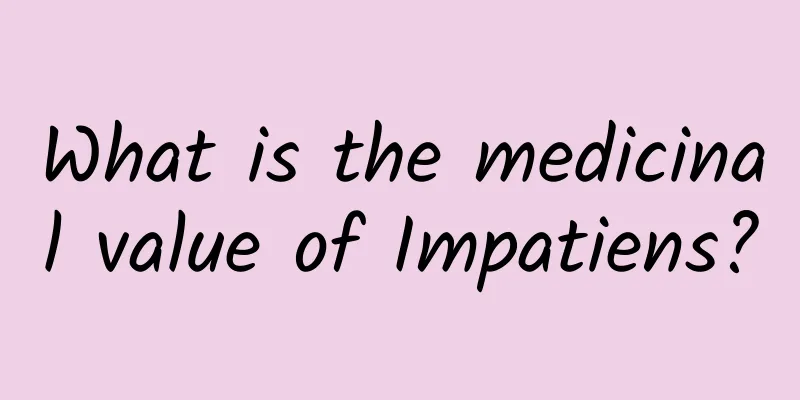The efficacy and function of the ground umbrella

|
Traditional Chinese medicine has a history of thousands of years. It appeared at a very early time, and it has very satisfactory effects on the treatment of diseases. There are many types of traditional Chinese medicine. Do you know the medicinal material "Pudi Luosan"? [Other names] Ground-fingered worm, tuberculosis grass, ground-fingered golden bull, caterpillar medicine, caterpillar medicine male, tiger tongue, hairy-footed skin [Source] Medicinal material source: the whole plant of Myrsinaceae plant Ardisia rosea. [Original form] A short shrub or nearly herbaceous plant. Stem short or almost absent, often rusty-hairy. Leaves are alternate or rosette-shaped; petiole 5-10mm long, densely pubescent; leaf blade is hard papery or almost membranous, elliptic or oblong-obovate, 6-12cm long, 3-5cm wide, obtuse or suddenly acute at apex, rounded at base, with inconspicuous sparse shallow crenates on margin, with marginal glandular dots, sometimes purple-red on both sides, covered with curled rusty pubescent hairs, with long cilia; lateral veins are about 6 pairs, obvious, forked far away from the margin, and not connected to form marginal veins. Cymes or sub-umbels, single, emerging from rosette leaf axils; pedicels 6-8mm long, all densely rusty long hairs; sepals oblong-lanceolate, acute at apex, nearly as long as petals, with glandular dots and ciliates, rusty long hairs on the outside; flowers 4-6mm long, petals pink, broadly ovate, with glandular dots; stamens slightly shorter than petals, anthers lanceolate, with sparse glandular dots on the back; pistil slightly shorter than petals, ovary spherical, sparsely pubescent. The fruit is spherical, 4-6mm in diameter, slightly fleshy, bright red, with sparse glandular dots, pubescent or almost glabrous. The flowering period is June-July. The fruiting period is November-December, sometimes extended to April-May. [Habitat distribution] Ecological environment: Grown in the shade and moist places under dense forests on hillsides at an altitude of 600-1400m. 【Properties】 Characteristics identification: The leaves are basal and rosette-shaped. Sometimes cut into pieces. The complete leaves are oblong-obovate, with rust-colored long soft hairs on the surface, wavy round teeth on the edges, glandular dots, and membranous. Sometimes an umbel can be seen in the center of the rosette leaves, with a weak aroma, light taste, slightly bitter and astringent. 【Nature and flavor】 slightly bitter; pungent; cool 【Functions and indications】 Dispel wind and dredge meridians; disperse blood stasis and stop bleeding; detoxify and eliminate carbuncle. It is mainly used for rheumatic joint pain, hemoptysis, hematemesis, intestinal bleeding, amenorrhea, lochia retention, traumatic injury, mastitis, furuncle. [Usage and Dosage] For oral use: decoction, 15-30g. For external use: take appropriate amount and mash the fresh product for application. . 【Excerpt】 Chinese Materia Medica Having said so much, we can see that the ground umbrella has many uses. It can also be used as medicine to treat diseases. You might as well know more about these, it will be helpful in your life. |
<<: The efficacy and function of Pu'er tea paste
>>: The efficacy and function of the broken bowl palm tree
Recommend
These "grapes" are free, but they can cost you your life!
In nature, there are many kinds of grapes that ar...
The efficacy and function of toon seeds
Although Western medicine and Western drugs are m...
Are there any benefits for women to eat maca?
Female friends can actually eat maca with confide...
What are the benefits of stewing snow pear with Sichuan Fritillary Rock Sugar?
As we all know, the climate changes drastically i...
What are the effects and ways to eat maca tablets?
The efficacy and effects of maca tablets can be r...
Is it healthy to have bowel movements every day? Is frequent and smelly farts a sign of colon cancer? You must understand these "intestinal" misunderstandings
The stomach and intestines are a pair of "go...
Is it harmful to boil Chinese medicine for a long time?
In fact, in today's society, in addition to u...
Is the Laniakea Supercluster, composed of 100,000 galaxies, the largest structure in the universe?
What is the world to a person? Is it the Earth? N...
Is there really a big difference between a 200 yuan and a 2,000 yuan hair perm and dye at a barber shop?
Expert of this article: Wang Wenxiang, professor ...
What are the medicinal values of Erigeron chinensis?
I believe everyone has heard of the Chinese ephed...
He chose one thing and devoted his whole life to it. He spent more than 40 years fighting against an "epidemic"!
On the road of scientific exploration, countless ...
Tibetan medicine for gout
The main cause of gout is the long-term high uric...
The efficacy and function of crape myrtle
Traditional Chinese medicine requires the use of ...









